Welcome back, my fellow creatives! The Summer Solstice has come and gone, leaving Wisconsin with a collection of thunderheads eager to crack our air with lightning and thunder and blanket our countryside with rain (and sometimes hail). Had I knowledge of seeds and soil, such weather would be fit for a plot of sprouts (well, not the hail, but you get me). But alas, my neglected garden remains…neglected. Well, save for the one onion I threw into the mud for a lark. That’s actually sprouting! Now to make sure I don’t mow it down by accident…

In a few days’ time, a group of fellow educators and I are getting together to celebrate nature in literature. Some are eager to discuss the beauty of nature in poetry, others the power of nature’s presence in nonfiction.
And then there’s me, eager to talk about how nature can be used to kill us.
Don’t worry, I’m not digging into any eco-terror-type tales. No, I went to my beloved mystery series, for of course I had to. I gathered a batch of Sherlock Holmes stories where the rural isolation played a role in the crime, and a batch of Brother Cadfael mysteries where flowers played a role in the whodunit with the Rare Benedictine. If you’d like to explore the Holmesian Countryside with me another time, let me know! In the meantime, let’s take a stroll among the flowers that will never ever grow under my care (though considering the poisonous nature of some, that’s probably for the best).
~*~
I’ve only written about Brother Cadfael once or twice previously, so here’s a brief refresher:
The Cadfael series is a mystery series set in 12th century England featuring a Benedictine monk who had served in the Crusades before taking Orders. His time in the world not only taught him a wide variety of herbal remedies and apothecary skills, but also the depth and breadth of human nature.
Cadfael’s peace, though, is always to be found in the garden.
He doubted if there was a finer Benedictine garden in the whole kingdom, or one better supplied with herbs both good for spicing meats, and also invaluable as medicine. The main orchards and lands of the Shrewsbury abbey of Stain Peter and Saint Paul lay on the northern side of the road, outside the monastic enclave, but here, in the enclosed garden within the walls, close to the abbot’s fish-ponds and the brook that worked the abbey mill, Brother Cadfael ruled unchallenged. The herbarium in particular was his kingdom, for he had built it up gradually through fifteen years of labour, and added to it many exotic plants of his own careful raising, collected in a roving youth that had taken him as far afield as Venice, and Cyprus and the Holy Land. For Brother Cadfael had come late to the monastic life, like a battered ship settling at last for a quiet harbour…He saw no contradiction in the delight he had taken in battle and adventure, and the keen pleasure he now found in quietude. Spiced, to be truthful, with more than a little mischief when he could get it, as he liked his victuals well-flavoured, but quietude all the same…
A Morbid Taste for Bones
Don’t we all, Brother. Indeed, don’t we all.
First, a visit to The Rose Rent.
We are not quite in Brother Cadfael’s herb garden within the cloister’s walls, but we are now on abbey grounds. This home, you see, was willed by a widow named Judith. She gifts it to Shrewsbury Abbey with the request of being given a single rose from her late husband’s rose bush as a form of rent. The rose bush itself is quite impressive, as our flora-loving monk will tell you.
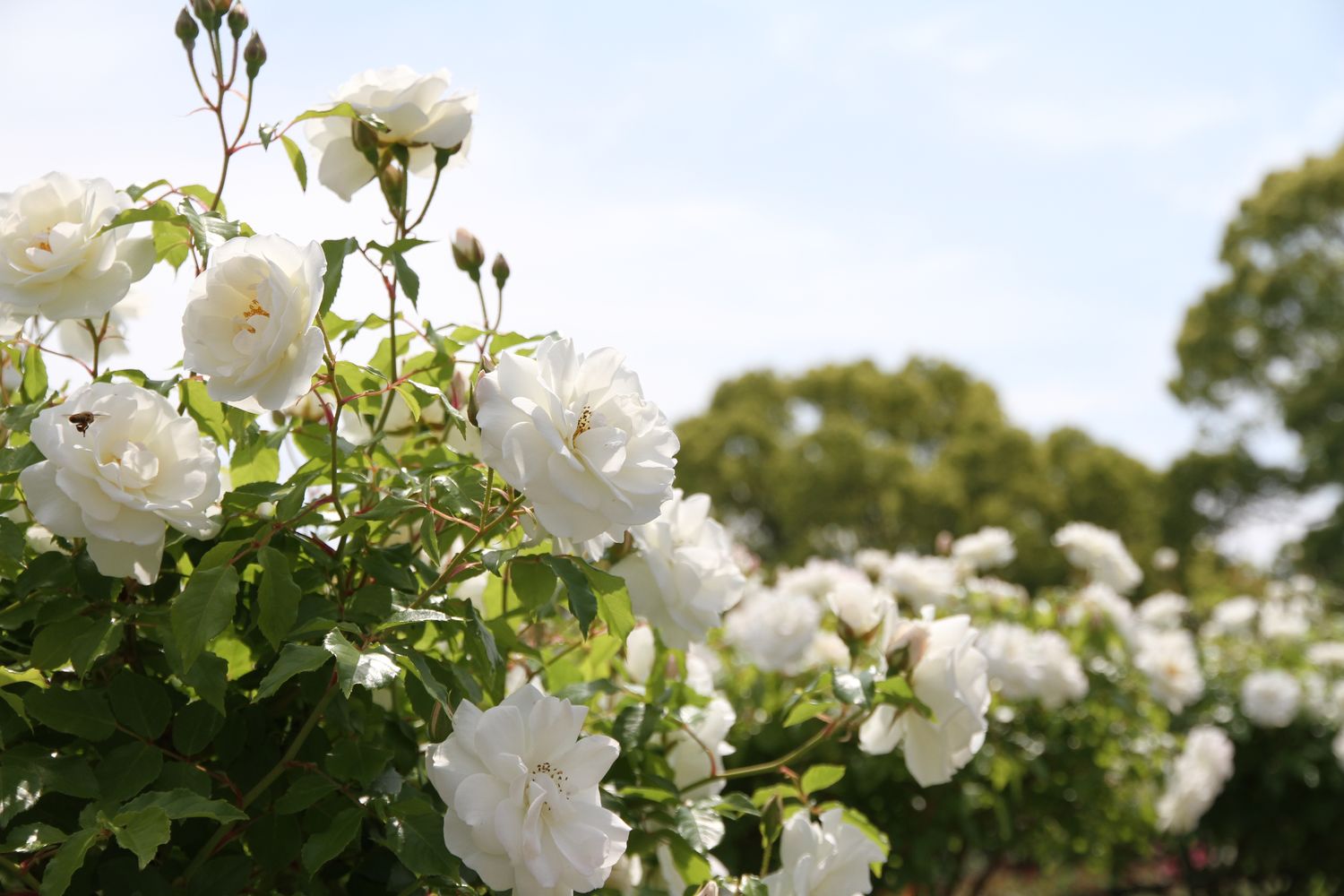
A snow of white, half-open buds sprinkled it richly. The blooms were never very large, but of the purest white and very fragrant.
Many men seek the attention of the pure, beautiful Judith, but she refuses all. Even the young monk charged with caring for the rose bush falls in love with the widow, but he is soon found dead alongside the plant. The authorities assume the rose bush was simply wrecked in the attack, but Brother Cadfael thinks otherwise.
“What was done to the rose-bush,” said Cadfael firmly, “was not done with that knife. Could not be! A man would have to saw away for half an hour or more, even with a sharp knife, at such a thick bole. That was done with a heavier weapon, meant for such work…”
Why is the rose bush as brutalized as the boy? THAT is a crucial piece of the mystery, for someone wants the Rose Rent as broken as Judith’s ties to the past. But who could it be?
For that, you will have to read the mystery.
Come, let us visit Brother Cadfael’s workshop now. I hear he keeps cherry wine here as well as many balms and salves. Just take care with the Monk’s-Hood!
While many plants served their purpose in healing mixtures, some could be powerful healers as well as killers. Monk’s-Hood is one such plant. Named for the cowl-like shape of its petals, this lovely flower plays a critical role in attending the aged in the abbey’s infirmary. The risks of using it, however, cannot be understated.
“But keep it carefully, Edmund, never let it near your lips. Wash your hands well after using it, and make sure nay other who handles it does the same. It’s good for a man’s outside, but bad indeed for his inside. … [the oil is] the ground root of monk’s-hood, chiefly, in mustard oil and oil from flax seeds. It’s powerfully poisonous if swallowed, a very small draught of this could kill…”
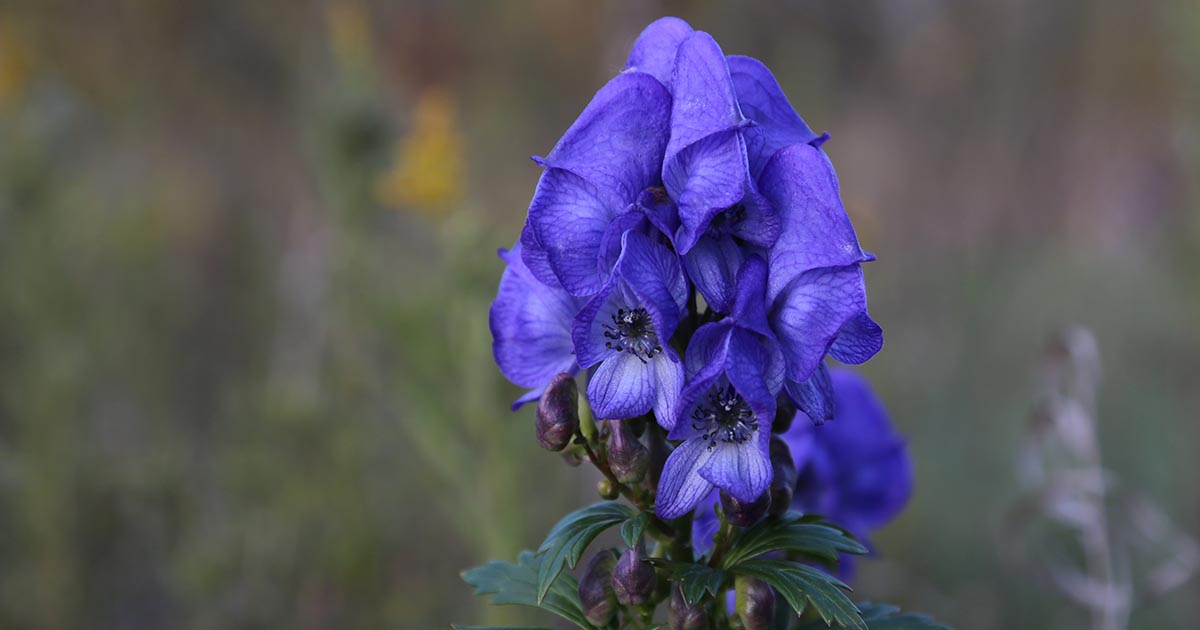
When a hard-headed landowner is found poisoned not only by food from the abbey but with the Monk’s-Hood salve Cadfael makes for the infirmary, the Benedictine must act quickly to clear the abbey and reveal the killer.
“If you can make medicines from this plant,” said Prior Robert, with chill dislike, “so, surely, may others, and this may have come from some very different source, and not from any store of ours.”
“That I doubt,” said Cadfael sturdily, “since I know the odour of my own specific so well, and can detect here mustard and houseleek as well as monk’s hood. I have seen its effects, once taken, I know them again.”
Cadfael uses his knowledge of the oil’s smell and stain to bring the killer to justice, for few realize just how poisonous such a potion can be. The sheriff certainly didn’t until Cadfael tested the main suspect by asking him to drink the monk’s hood to calm his nerves–and he would have if not for Cadfael’s intervention.
But why was the landowner killed? For that, you will have to read the mystery.
Plants can not only help heal, but they can also help provide place. We can visit a nearby shepherd’s hut so you can see and smell for yourself.

The clover’s quite heady isn’t it? Clover was often used as a perfume for altar lamps in this time period, but it was also grown by farmers to feed livestock. Goose-grass, too, was quite handy for feeding farm animals, but even Brother Cadfael could put such a clingy plant to use in making salves for wounds.

It’s this particular combination of clover and goose-grass that helped Cadfael uncover a murdered man’s body among King Stephen’s executed prisoners. Only the murdered man had the smell of clover and the burrs of goose-grass (as well as different strangulation marks, but that’s nothing to do with the plants), so by finding the barn with both plants, Cadfael was able to uncover the murder weapon and other clues to the killer.
The dry grass was well laced with small herbs now rustling and dead but still fragrant, and there was a liberal admixture of hooky, clinging goose-grass in it. That reminded [Cadfael] not only of the shred of stem dragged deep into Nick Faintree’s throat by the ligature that killed him, but also of Torold [Blund]’s ugly shoulder wound.
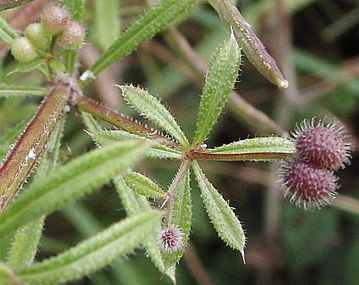
With war among the monarchs, everyone, even those cloistered, are caught up in the bloodshed, the betrayals, and the espionage. Cadfael must show the king that this singular corpse could crack his credibility beneath the crown…hopefully without losing his own life in the process. Does he succeed?
For that, you will have to read the mystery.
One last stop, I think. The hawthorn hedge is beautiful this time of year, its white petals falling as gently as snowflakes upon the ground. Did you know those of this time period believed the crown of thorns placed upon Christ’s head came from a hawthorn plant? Such a connection with the divine should be revered…and put to good use…
One of the young monks under Brother Cadfael’s supervision frequently experiences visions and extreme spams, so Cadfael must often give the monk poppy juice to help still the boy’s body and mind. When some other ambitious monks “interpret” the boy’s visions as a plea from a Welsh saint to dig up her bones and bring them to Shrewsbury, Cadfael (being Welsh) has no choice but to accompany this band of Brothers into Wales to exhume the saint.
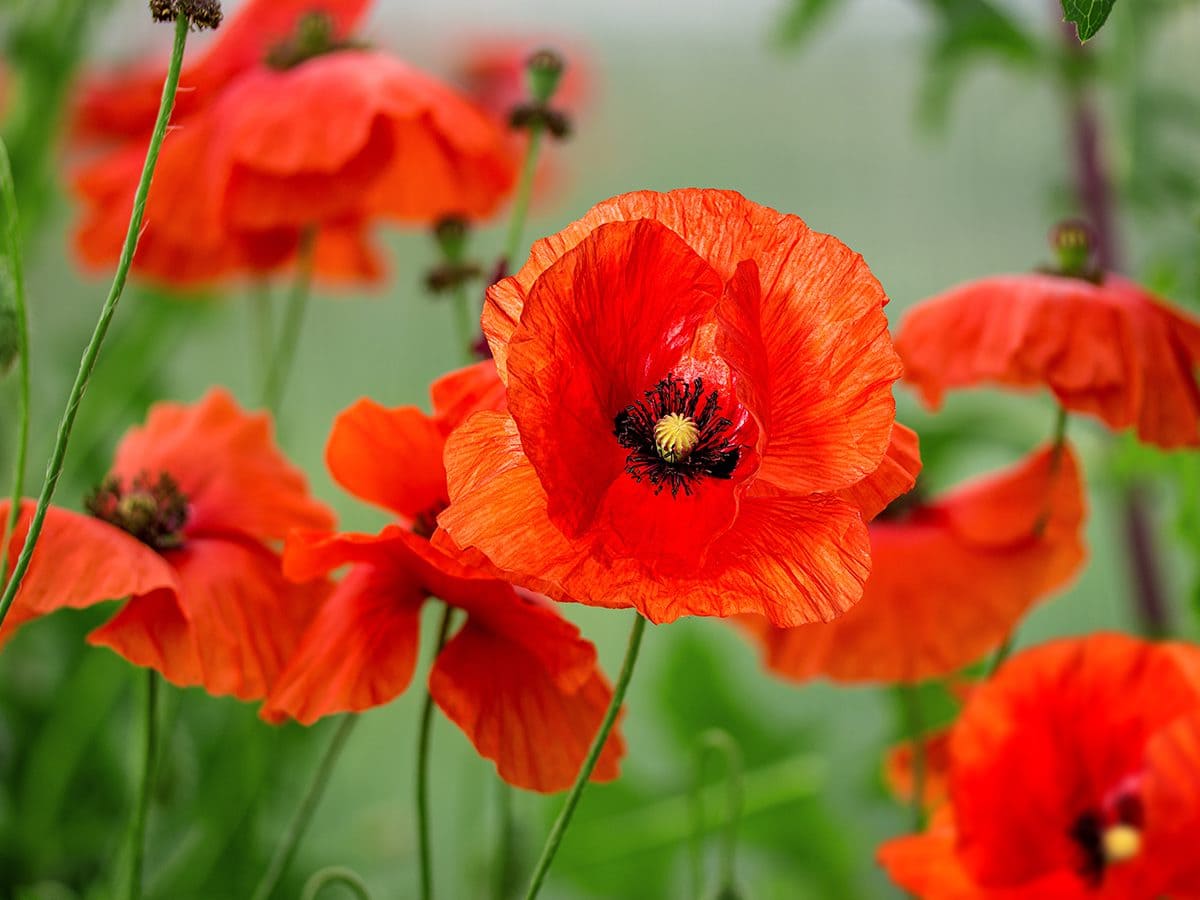
Not surprisingly, this venture leads to conflict between cloister and Welsh, and one morning soon after their arrival, the leader of the Welsh village is found dead. Cadfael is not wanting for suspects, but once he discovers his poppy juice supply has been drained, he quickly works out the identity of the killer.
To cease the conflict in the village and protect the saint whose bones his abbey so desperate wants, Cadfael chooses to put that reverence for hawthorn to use in a display of “divine” intervention.
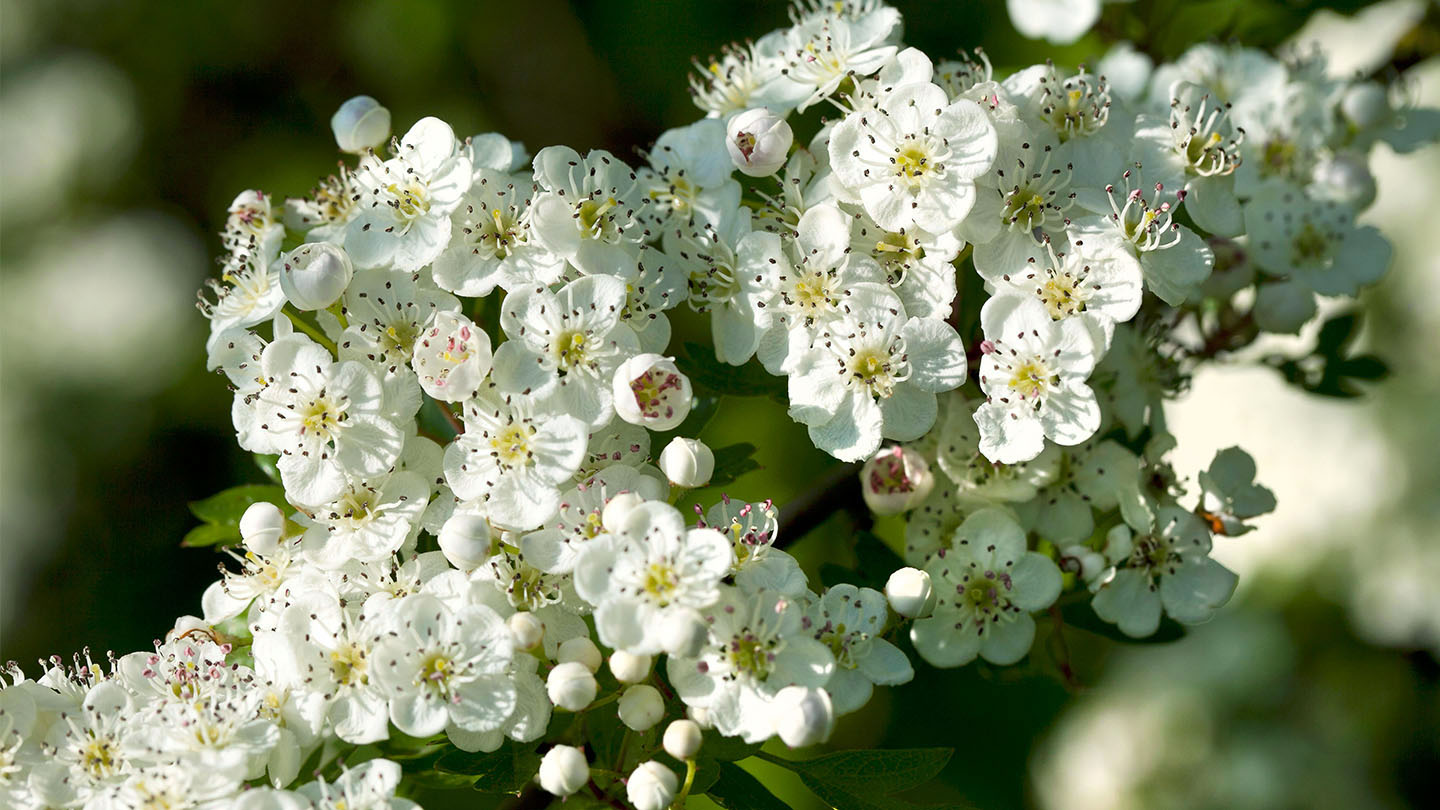
Over altar and reliquary a snowdrift of white petals lay, as though a miraculous wind had carried them in its arms across two fields from the hawthorn hedge, without spilling one flower on the way, and breathed them in here through the altar window.
Why the ruse? For that, you’ll have to read the mystery.
~*~
Is it any wonder that Cadfael inspired my character Arlen? Both men of nature and healing, of principle and justice. Both called in dire days to summon past skills. Both fiercely loyal, giving, and kind.
We could use more Cadfaels in this world right now. But perhaps they are already among us–in the streets. In the battles.
Or, perhaps, in the gardens.
This season, do take a moment to explore a beloved park, forest, or other sanctuary of nature. Such places of color and quiet can be a balm to soothe the tired soul.
~STAY TUNED!~
If you’d like to meander through the Holmesian countryside, do let me know! Otherwise, I’ve finally seen Kenny B’s adaptation of Death on the Nile, and I have thoughts–not just about his take, but on how big or small a cast should be. Considering how the cast size of Death on the Nile changes over the course of a novel and three different film adaptations, it’s worth asking ourselves as writers just how many characters and subplots one needs in a tale to keep it clipping along.
Read on, share on, and write on, my friends!

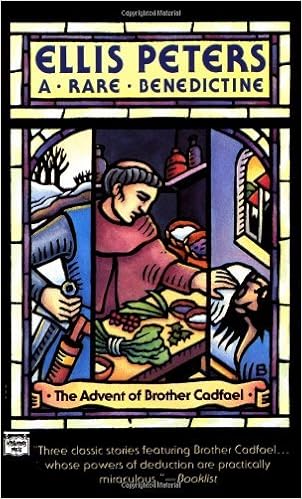
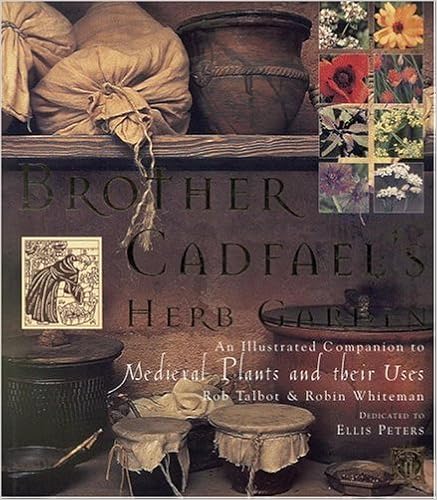


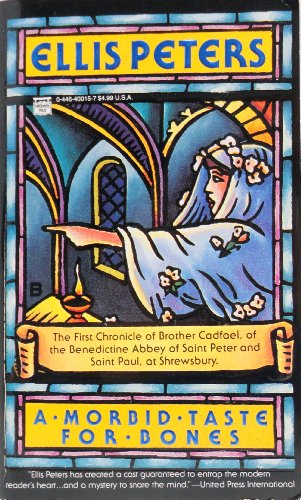
A Brother Cadfael. My Mr loved these books.
LikeLiked by 1 person
I forgot how accessible they are! It takes a special soul to write from such a time period with word choices that modern readers can understand and appreciate. Hope you’re well, Shey! xxxxxxxxx
LikeLike
Ooh, I love Brother Cadfael! Both the books and the television adaptations. What an excellent choice for looking at nature in literature, too!
LikeLiked by 1 person
Isn’t it a neato fit? My colleagues picked a nature focus for our lit talk, so of course Cadfael popped into my mind. It was fun to share him with others, since only a few had heard of him. I think I converted a few to try the series. 🙂 Hope you’re well! xxxxxxx
LikeLiked by 1 person
I am prepping to move across the country and having to sort through *everything* — including all of my personal books and old academic books from back when I was a college professor. As you might imagine, it is quite the emotional task to just sort through the books, much less actually choose some for the culling pile. But hopefully the library I donate them all to will have a good use for them!
LikeLiked by 1 person
Oh, I know what you mean. When our basement flooded a few years ago, Bo and I had to dig through a LOT of stuff and ask ourselves some tough questions on what we truly need. A lot of old notes and ideas just had to go, which sucks, but that’s the way of it. xxxxxxxxx
LikeLiked by 1 person
I am still in the thick of it over here. About to face my drawers of files and paperwork. Including all those hand-written comments on old chapters that probably never got incorporated into later versions of that old novel-in-progress (which is not exactly in progress these days). So yep, it all goes! Fresh start on the other side…
LikeLiked by 1 person
Yes! Time is not always kind when one’s an educator, but we find a way. We always find a way. 🙂 xxxxxxx
LikeLiked by 1 person
Do be safe on your move! Hope it’s full of adventure and not (mis)adventure. 🙂
LikeLiked by 1 person
I remember watching the TV series starring Derek Jacobi.
LikeLiked by 1 person
Those were my introduction to the series as well! I was so stoked to find the series for sale. Jacobi is brilliant in the role.
LikeLiked by 1 person
Thank you for this reminder. I haven’t read an Ellis Peters book in ages, but have always loved stories featuring Brother Cadfael.
LikeLiked by 1 person
He’s a joy! I just finished a later chronicle which was nice. The mystery was so-so, but it was a joy to meander through the world again. 🙂
LikeLiked by 1 person
Wonder how many plants are featured in murder mysteries throughout the ages, Jean. Happy 4th to you!
LikeLiked by 1 person
Indeed! Whether it’s forensics, motive, or murder weapon, nature can play an important role in mysteries. Hope you had a beautiful 4th as well!
LikeLiked by 1 person
🙏♥️
LikeLiked by 1 person
I love my Holmes and Cadfael books. Books that transferred so well to the screen. I remember going solo climbing one weekend and the wild campsite was only a few yards from the ruins of an old abbey. In the evenings I would take my Cadfael book into the ruins and read it there, I had the place to myself. I have to say that was just the most amazing reading experience.
LikeLiked by 1 person
That. Sounds. AMAZING. I’ve never just sat and read in nature. I really need to try this!
LikeLike
[…] a big fan of Umberto Eco’s Name of the Rose and the Cadfael series by Ellis Peters, so another mystery with monks? Sign me up! And as a writer, Donoghue packs a lot […]
LikeLiked by 1 person